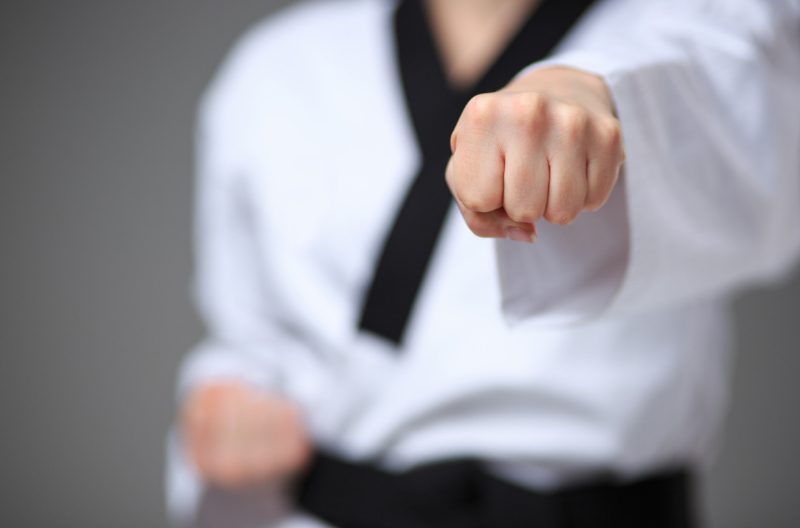Do you want to ramp up your fitness while learning how to defend yourself? Martial arts training could be the answer. These types of sports include a selection of physically demanding activities that will absolutely push you to your limits. So what is martial arts and how can it help you? In this brief guide, we will take a look at the facts along with seven different martial arts styles.
What is Martial Arts?
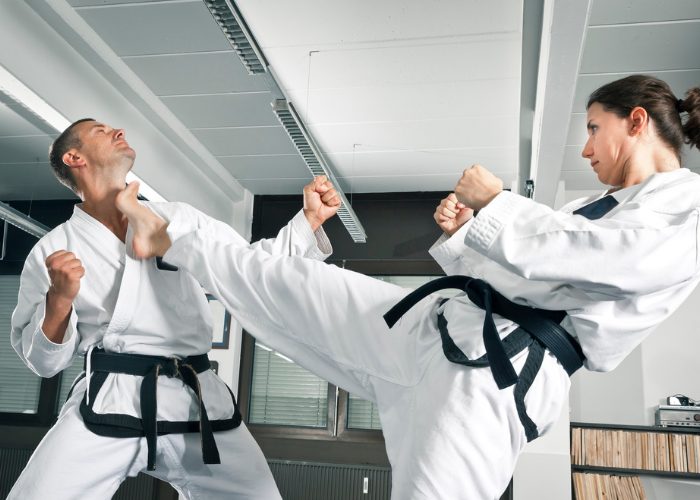
Let’s start out with a basic martial arts definition. Combining self-defense, health, and fitness, martial arts training is the umbrella term used for a wide range of practices.[1] Many of these practices originated in parts of Asia, but have now been developed and adapted for western countries. The major types of martial arts often use mental techniques, forms of self-protection, and aerobic exercise. You should always attend a registered class when starting out so that you can avoid common injuries and mistakes.
Why Should I Consider Martial Arts Training?
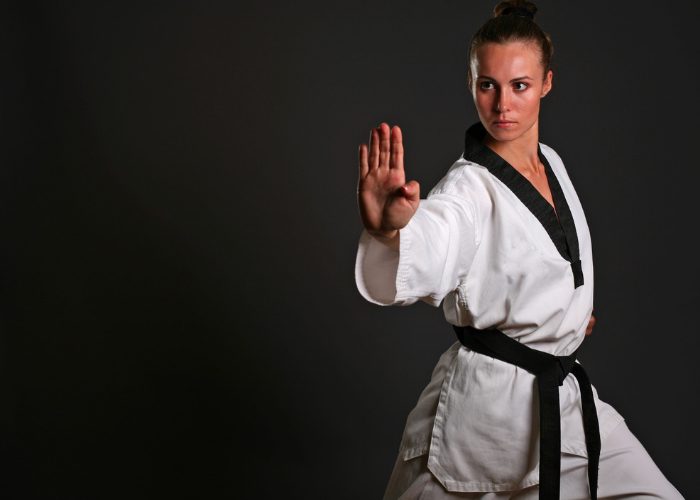
Since martial arts training includes a range of strength, aerobic, and agility practices, it can help boost your everyday wellness greatly. Aerobic exercise has been shown to reduce belly fat and improve cognitive function, according to scientific research.[2],[3] On the other hand, learning some basic self-defense is a positive step in itself, giving you an extra level of protection when it comes to your day-to-day life.
The benefits of the many martial arts styles don’t end there, though. It could have a mental impact too. For instance, research from Massachusetts General Hospital found that practicing these sports could help young people reduce their risk of depression.[4] Plus, since many of the martial arts styles involve mindfulness and mental focus, you could find that engaging in them helps clear your head and allows you to relax.
7 Different Types of Martial Arts
Are you interested in trying some martial arts styles? While these types of sports all center around self-defense, there’s a broad variety of options you can try. With that in mind, let’s take a look at seven different types of martial arts and why you should try them.
1. Boxing
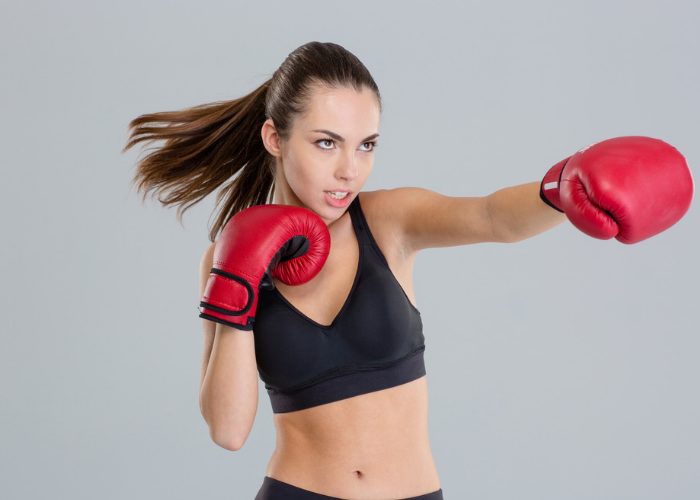
- Exercise type: Cardio and strength
- Difficulty level: Medium
- Origin: Ancient Greek martial arts
Sometimes called “pugilism” or “fist-fighting”, boxing is a sport that requires you to fight your opponent using your hands. It is an official sport and was first introduced into the Olympic Games back in 1904.[5] Over the years, the sport has taken on many forms. Many people now take up this martial arts training as a form of exercise rather than self-defense, although it has advantages in both areas.
For example, one variation of this activity is the trademarked Boxercise.[6] As the name suggests, the sport combines both boxing and exercise to deliver a full body workout.[7] The sport is both aerobic and anaerobic, which means the training allows you to keep fit and while using the techniques learned in the ring.
2. Wing Chun
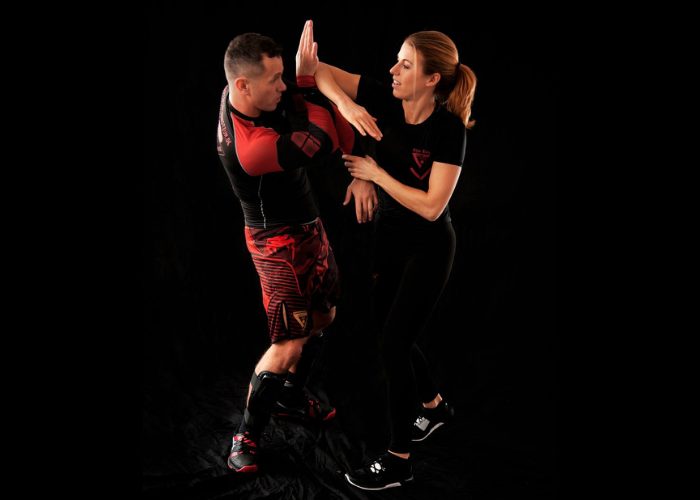
- Exercise type: Cardio, strength, and agility training
- Difficulty level: High
- Origin: Chinese martial arts
Originating during the civil war when China was transitioning from the Ming to the Qing Dynasties, Wing Chun is one of the best martial arts for self-defense. The story goes that between 1796 and 1820, during this turbulent time, kung-fu masters who did not believe in the Qing Dynasty were at great risk. They were often hunted down and killed for their beliefs.[8] A daughter of one of these families, Yim Wing Chun, began to secretly train with her father from a young age.
However, she soon caught the attention of a warlord. When she was able to fight off his advances, he challenged her to a duel. If she won, he would let her marry anyone she pleased. This tale caught the attention of the locals and, of course, Chun won the fight. Her technique was interesting, using the warlord’s own strength against him. Many years later, she began to teach the unique form of Wing Chun Kung Fu.[9]
Now, the form of Chinese martial arts is taught all around the world. Bruce Lee famously learned this form of kung fu as well.[10] If you would like to learn the Chinese martial arts for yourself, you should look for a nearby class.
3. Karate
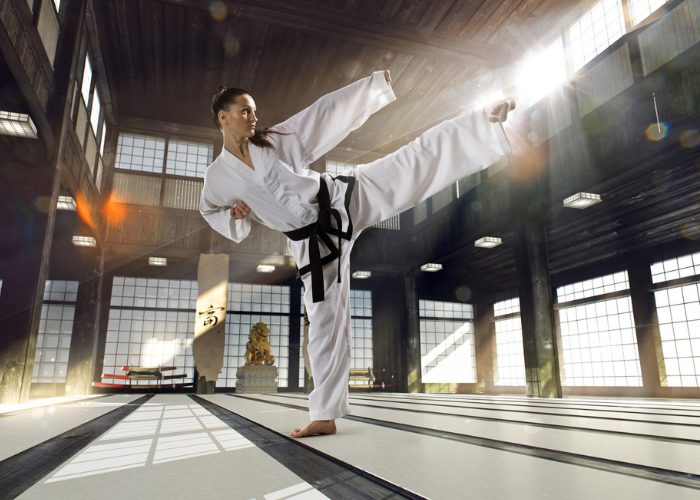
- Exercise type: Cardio and agility training
- Difficulty level: Medium
- Origin: Japanese martial arts
Originating in the blue zone area of Okinawa, karate is perhaps one of the best-known types of martial arts. It is practiced by 60 million people in around 180 countries, making it one of the most popular martial arts worldwide.[11]
There are now four primary styles of karate that are practiced in Japan –Goju-ryu, Shito-ryu, Shotokan, and Wado-ryu.[12] Each version of the Japanese martial arts combines a series of movements, kicks, and poses to help people learn the art of self-defense. If you want to get started, you should find an accredited class near you.
4. Arnis
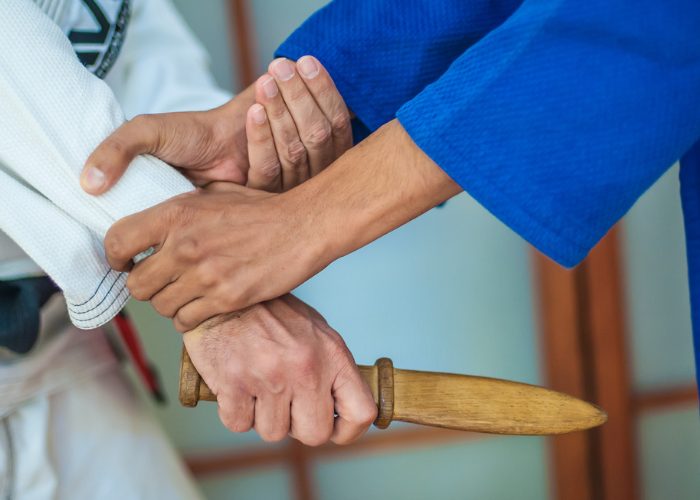
- Exercise type: Cardio and agility training
- Difficulty level: High
- Origin: Filipino martial arts
Arnis is a hand-to-hand combat sports that dates back to the 16th Century in the Philippines. It is also known as Kali martial arts and sometimes involves using a large blade or stick. However, Arnis de Mano, one form of the sport, is enacted without any use of weapons at all. The aim is to make sure that you can defend an attack with your bare hands.[13]
While the sport was originally practiced as method of fighting in war, it has now changed. Many filipinos learn the sport as a form of self-defence or even merely a hobby. What’s more, the sport has also been modernized over time, meaning that it is far less dangerous to practice today. Should you wish to learn about it, you need to make sure that you enlist with a registered teacher or at a class.
5. Capoeira
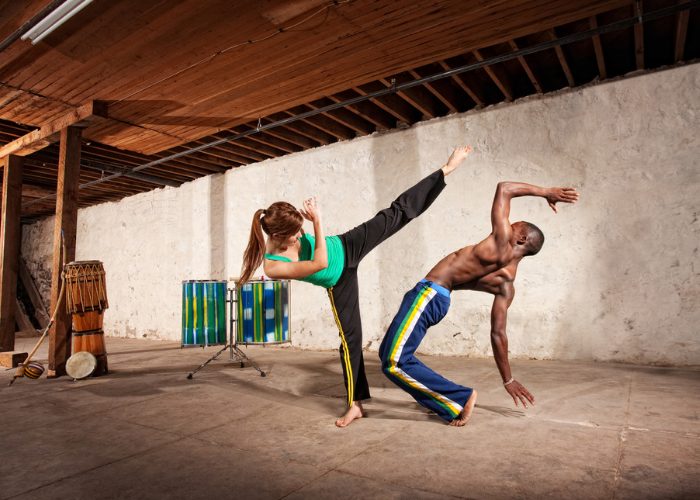
- Exercise type: Cardio, strength, and agility training
- Difficulty level: Medium
- Origin: Brazilian martial arts
If you’re interested in Brazilian martial arts, you need to learn about Capoeira. The sport combines self-defense, music, dance, and game-play to create an entirely unique style of activity. The martial arts dates back around 500 years and was invented by enslaved people at the time.[14] During the 20th Century, the sport rose in popularity and practitioners in the art started to bring it out into the mainstream.
Over the years, the art became more and more popular with everyday Brazilians. These days, there are two major forms of the sport – Angola and Regional.[15] Both of these styles incorporate traditional elements of the activity along with some more modernised moves. It’s worth considering finding a class that specialises in contemporary Capoeira, if you want to learn this high-tempo, exciting sport.
6. Krav Maga
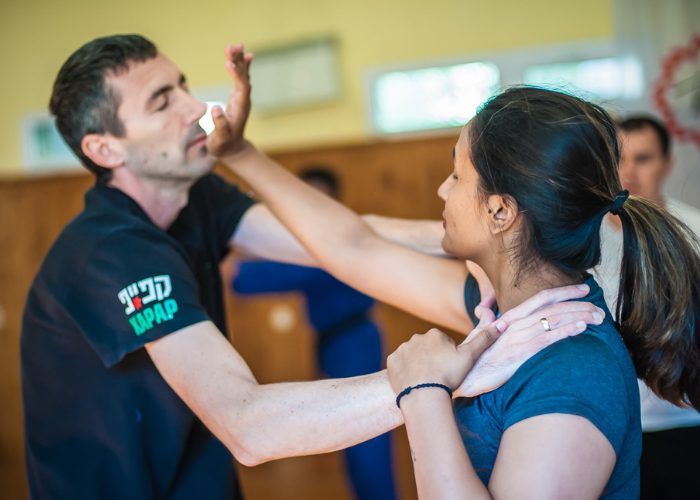
- Exercise type: Cardio and agility training
- Difficulty level: High
- Origin: Israeli martial arts
Boosting your mood, improving your reflexes, and relieving stress, Krav Maga is one of the most exciting types of martial arts.[16] The Israeli martial arts practice originated as the official Hand-to-Hand combat system used by the National Defense Forces.[17] The sport dates well back to 1948 when it was created by Imi Sde Or and is now the largest Reality Based Self Defense system in the world.[18]
The sport combines weapon defenses, performance training, grappling, and striking to create a martial arts training programme.[19] The main reason that people tend to start this sport is to boost their fitness and self-confidence, according to British Krav Maga.[20] It’s a varied and versatile practice that should help you to boost your fitness.
7. Mixed Martial Arts
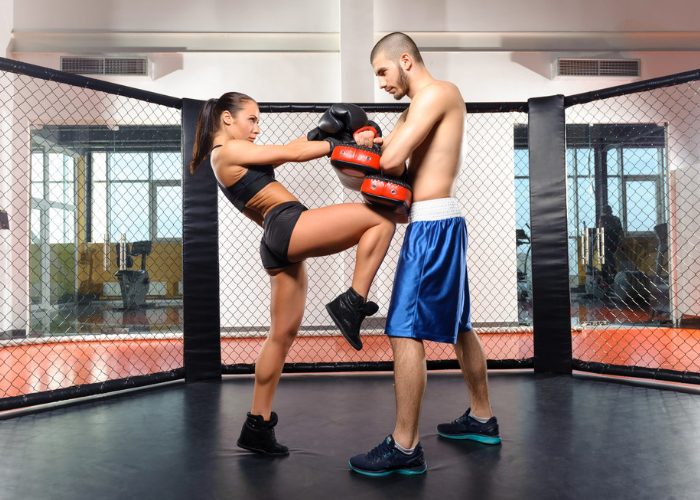
- Exercise type: Cardio, agility, and strength training
- Difficulty level: Medium
- Origin: Mixed origin
Mixed Martial Arts (MMA) is a hybrid of various types of martial arts training. The sport may include many of the above forms of training, including boxing, karate, and other Korean martial arts.[21] Aside from being a way to keep fit and active, it actually became one of the world’s fastest-growing spectator sports of the 21st Century.[22] When you start learning this particular sport, it’s worth remembering that with enough practice, you could one day turn pro.
Despite its recent surge in popularity, it is thought that the training started back in 648 BCE at the Olympic Games.[23] While the form of Mixed Martial Arts would have been somewhat different to what we know today, the idea of combining activities from various programmes is at the heart of the practice. There are various UFC and MMA academies around the US, so it won’t be hard to find a registered MMA school near you.
3 Beginner Moves to Get Started
Do you want to try some training at home? If you’re itching to get started, there are some beginner moves you can give a whirl. Of course, you should remember that, in order to learn the correct moves, you need to join registered martial arts classes or academies. These three moves take parts from various types of martial arts but give you a flavor of what you can expect from classes.
1. Forearm Block
Defend yourself using a forearm block. Video credits to owner.
Martial arts sports are all about defense so learning a simple block is a good place to start. The idea is that you can stop an attacker from striking you in the face by using your forearm. You execute this move by making a fist and hold it near your opposing ear. Your elbow should be pointing out the other side.
2. Front Elbow Strike
Learn how to do a front elbow strike. Video credits to owner.
Used in both Muay Thai and Krav Maga, the Front Elbow Strike is one of the easiest beginner martial arts moves. You simply need to bend your arm and quickly move your elbow toward the jaw of your dueling partner. Depending on whether the sport is a contact one or not, you may even strike your partner with your arm.
3. Karate Strike
Learn a basic karate strike. Video credits to owner.
Before you practice a karate strike, you need to clench your fist tightly. Your knuckles and forefingers should be at a 90-degree angle. The strike is a straightforward punching motion. You should make sure that your arm reaches out straight and extends as much as possible. When you have learned this basic move, you can vary it to create other strikes.

Conclusion
Ready to kick butt and start a new training programme? With any luck, this guide should have given you a quick introduction to the many types of martial arts training out there. However, we have by no means covered all that there is to know – there’s a great deal more styles you need to learn about. If you’re considering taking up one of the most popular martial arts styles, you will need to do your own research as well. Take some time to read up on each sport and find one that suits you and your fitness.
References
- [1] https://www.encyclopedia.com/sports-and-everyday-life/sports/sports/martial-arts
- [2] https://www.physiology.org/doi/full/10.1152/ajpendo.00291.2011
- [3] https://bjsm.bmj.com/content/49/4/248
- [4] http://www.psychiatrist.com/jcp/article/pages/2017/v78n05/v78n0507.aspx
- [5] http://fightclubamerica.com/about/history-of-boxing
- [6] https://www.boxercise.co.uk
- [7] https://www.boxercise.co.uk/faq.php?id=1
- [8] http://www.wingchunconcepts.com/historyofwingchun.php
- [9] http://www.wingchunconcepts.com/historyofwingchun.php
- [10] https://www.scmp.com/culture/film-tv/article/2156574/who-taught-bruce-lee-kung-fu-he-was-born-be-fighter-martial-arts
- [11] https://www.visitokinawa.jp/information/karate
- [12] https://www.thekaratelifestyle.com/what-are-the-types-of-karate/
- [13] https://www.hbgkungfu.com/arnis-history
- [14] http://www.capoeirabrazilpelo.com/resources/capoeira-history/
- [15] http://www.capoeirabrazilpelo.com/resources/capoeira-history/
- [16] https://kravmaga-academy.co.uk
- [17] https://britishkravmagaassociation.co.uk
- [18] https://britishkravmagaassociation.co.uk/beginners-krav-maga-faq.html
- [19] https://britishkravmagaassociation.co.uk/beginners-krav-maga-faq.html
- [20] https://britishkravmagaassociation.co.uk/beginners-krav-maga-faq.html
- [21] https://www.britannica.com/sports/mixed-martial-arts
- [22] https://www.britannica.com/sports/mixed-martial-arts
- [23] https://www.britannica.com/sports/mixed-martial-arts

